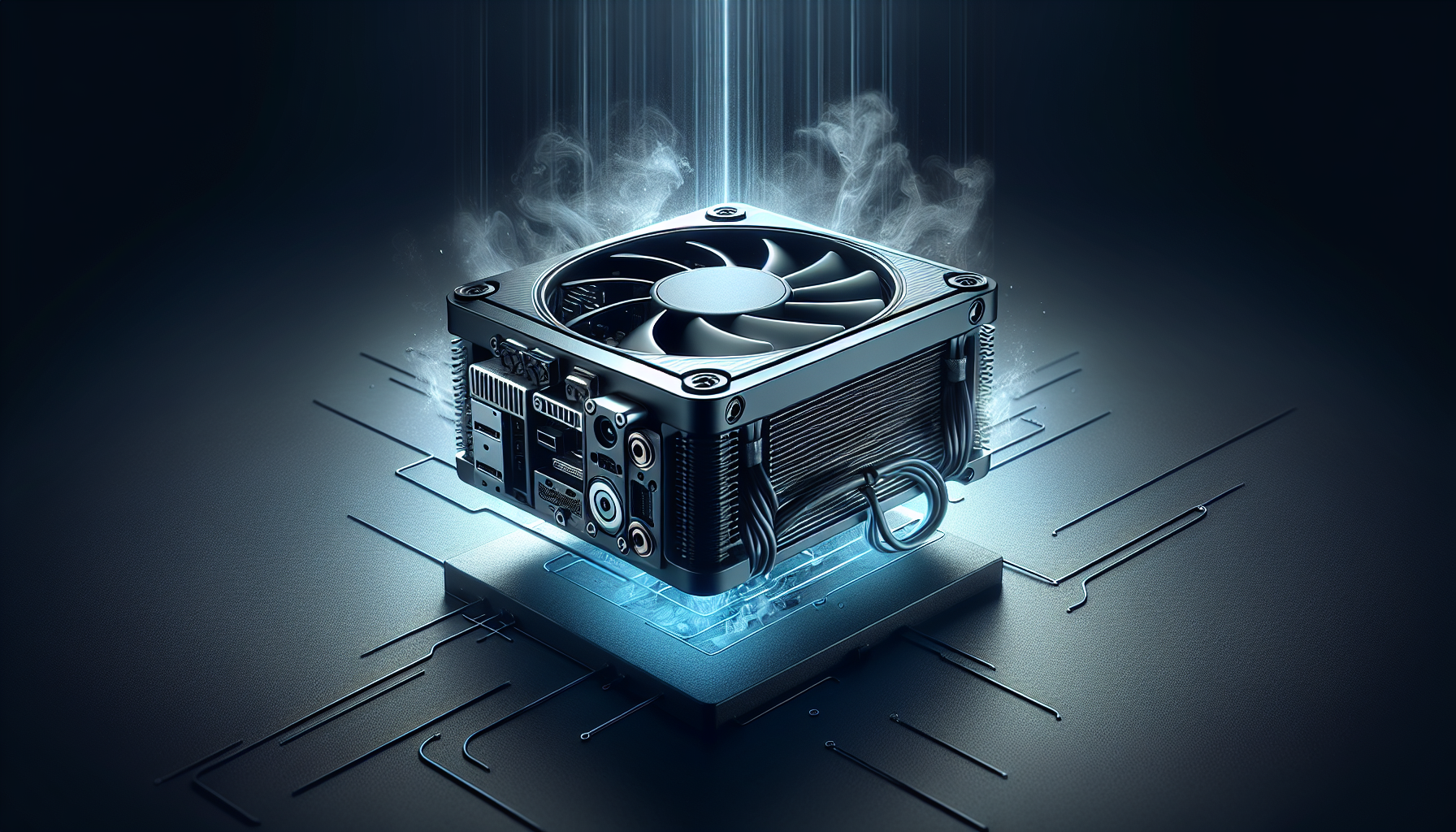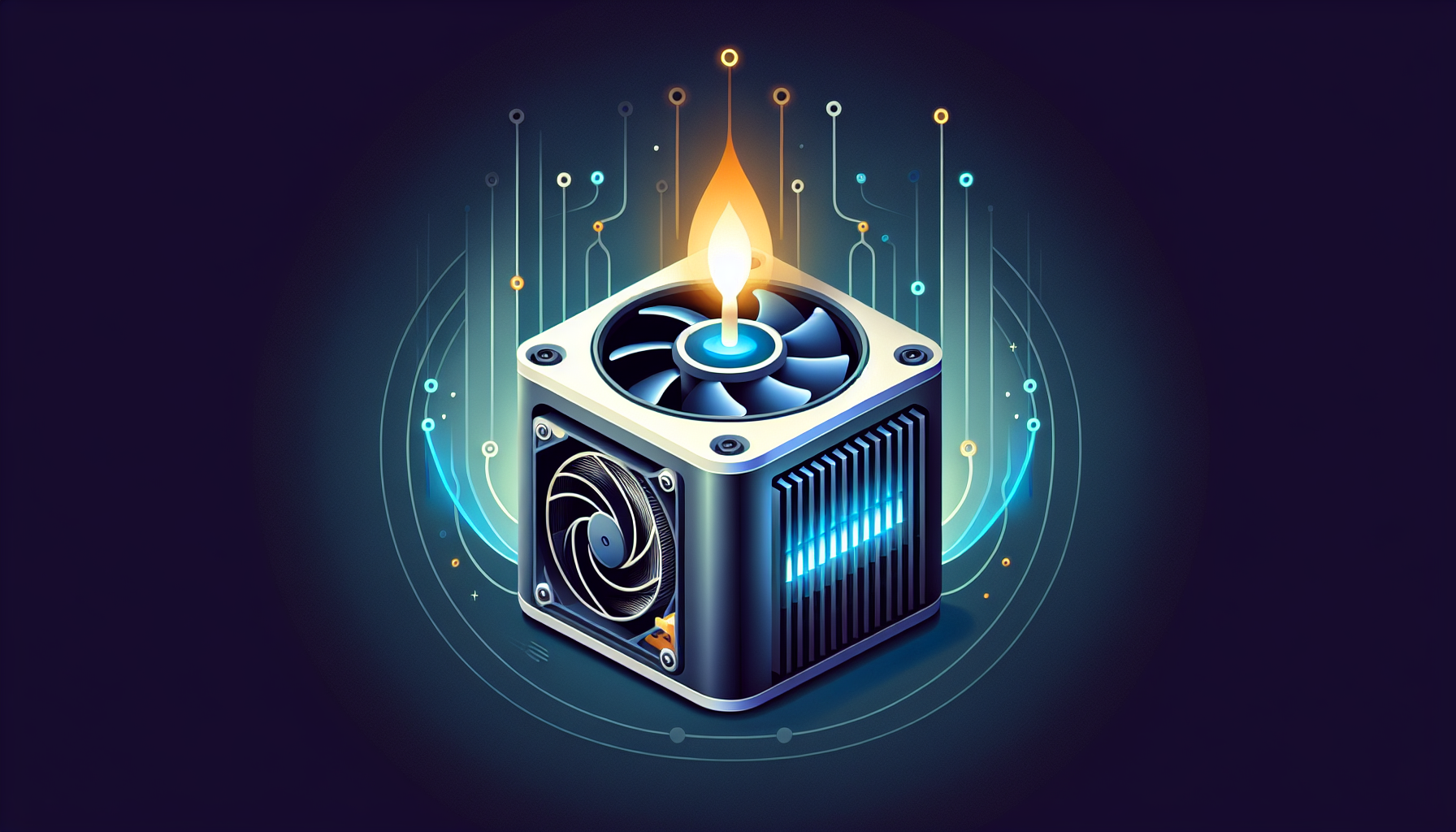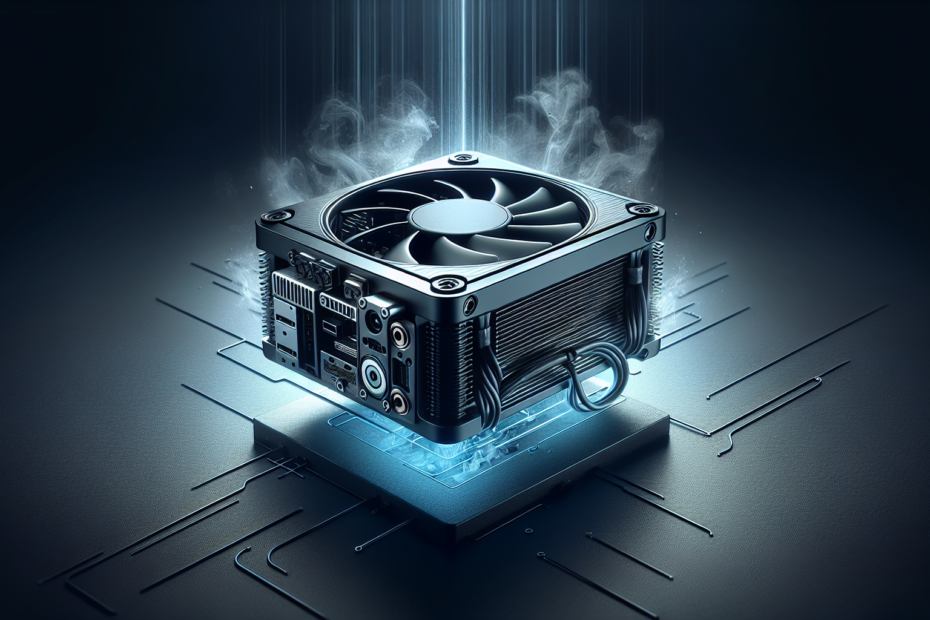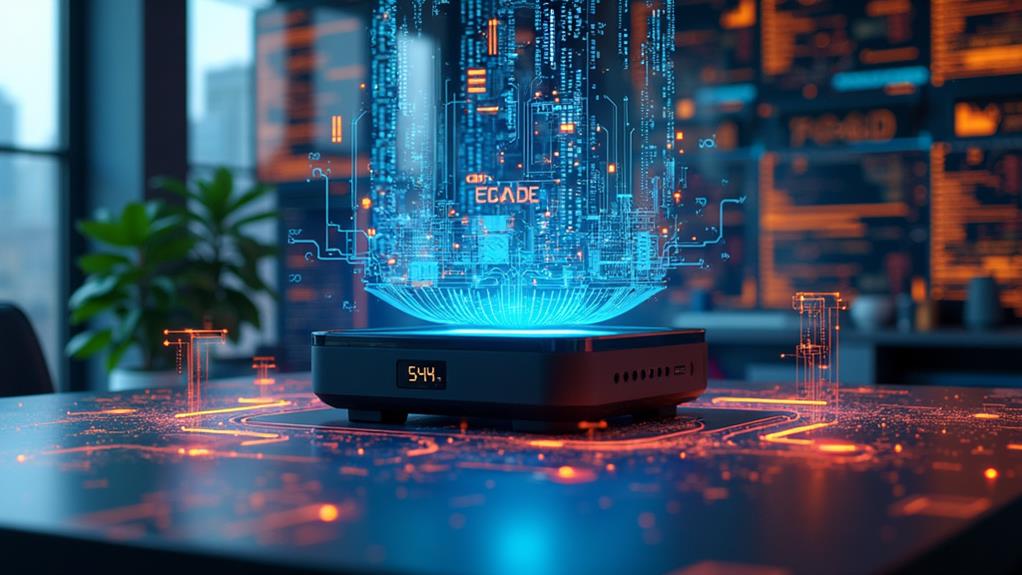



Have you ever wondered if mini PCs require cooling? With their compact size and powerful capabilities, it’s natural to question whether these little powerhouses can generate enough heat to warrant cooling measures. In this article, we will explore the need for cooling in mini PCs, examining their design, performance, and potential heat management challenges. By the end, you’ll have a better understanding of the cooling requirements for mini PCs and how to keep them running smoothly. So, let’s dive into the world of mini PCs and uncover the truth about their cooling needs.
Understanding Mini PCs
Definition of Mini PCs
A mini PC, also known as a small form factor (SFF) computer, is a compact and space-saving computer that offers similar functionality to a traditional desktop or laptop computer. Mini PCs are designed to occupy less space while still providing adequate computing power for various tasks. These devices are often used in areas where space is limited, such as offices, living rooms, or dorm rooms.
Components of Mini PCs
Mini PCs consist of several essential components that allow them to function effectively. These components include:
- Central Processing Unit (CPU): The CPU is the brain of the computer and carries out all the processing tasks. In mini PCs, the CPU is usually smaller and consumes less power compared to traditional desktop CPUs.
- Graphics Processing Unit (GPU): The GPU is responsible for rendering graphics and images. Mini PCs often have integrated GPUs or low-power dedicated GPUs to handle graphic-intensive tasks without generating too much heat.
- Random Access Memory (RAM): RAM stores temporary data that the CPU can access quickly. Mini PCs generally have limited RAM capacities, typically ranging from 4GB to 16GB.
- Storage: Mini PCs typically use solid-state drives (SSDs) for storage due to their compact size and faster read/write speeds compared to traditional hard disk drives (HDDs).
- Power Supply Unit (PSU): The PSU provides power to all the components in the mini PC. Since mini PCs have lower power requirements than larger desktops, the PSU is often smaller in size.
Importance of Cooling in Mini PCs
Cooling is essential in mini PCs to maintain optimal performance, prevent component damage, and ensure stability and reliability. Despite their compact size, mini PCs generate heat during operation. If this heat is not efficiently dissipated, it can lead to thermal throttling, decreased performance, and even possible damage to components.
Heat Generation in Mini PCs
CPU and GPU Heat Generation
The CPU and GPU are the primary components in a mini PC that generate significant amounts of heat. The CPU, while smaller in size, can still produce substantial heat due to its processing capabilities. Similarly, the GPU, although often low-power or integrated, can generate heat when handling graphic-intensive tasks such as gaming or video editing.
RAM and Storage Heat Generation
While RAM and storage components in mini PCs do not generate as much heat as the CPU and GPU, they still contribute to the overall heat generation. The activity level and usage of RAM can affect its heat output, especially when under heavy load. SSDs, although more energy-efficient than HDDs, can also generate some heat during data read/write operations.
Power Supply Unit Heat Generation
The power supply unit in mini PCs can also generate heat, although to a lesser extent compared to the CPU and GPU. The PSU converts the incoming AC power to DC power, and this conversion process generates some heat. However, since mini PCs have lower power requirements, the heat generated by the PSU is generally more manageable.

The Role of Cooling in Mini PCs
Preventing Component Damage
Cooling is crucial in mini PCs to prevent component damage caused by excessive heat. High temperatures can degrade the performance and lifespan of various components, including the CPU, GPU, RAM, and storage. By efficiently dissipating heat, cooling solutions ensure that these components operate within safe temperature ranges, thereby reducing the risk of premature failure or damage.
Improving Performance and Lifespan
Effective cooling in mini PCs can also improve performance and extend the lifespan of the components. When operating at lower temperatures, CPUs and GPUs can maintain their maximum clock speeds and boost frequencies, resulting in better overall performance. Additionally, cooler components experience less thermal stress, leading to increased durability and a longer lifespan.
Ensuring Stability and Reliability
Adequate cooling is essential for ensuring the stability and reliability of mini PCs. Overheating can cause system instability, leading to crashes, freezes, or even complete system shutdowns. By maintaining optimal operating temperatures, cooling solutions provide a stable and reliable computing environment, minimizing the risk of unexpected interruptions or data loss.
Active Cooling Solutions for Mini PCs
Fans
Fans are the most commonly used active cooling solution in mini PCs. These small, powerful fans are strategically placed within the mini PC case to expel hot air and draw in cooler air. By creating airflow, fans dissipate heat from the components, maintaining lower temperatures. Some mini PCs may have multiple fans to optimize cooling performance.
Liquid Cooling Systems
Liquid cooling systems, although less common in mini PCs, offer a highly efficient cooling solution. These systems use a pump to circulate liquid coolant through tubes connected to a radiator and a heat sink. The liquid absorbs heat from the components and transfers it to the radiator, where it is dissipated. Liquid cooling systems are known for their excellent heat dissipation capabilities, making them ideal for high-performance mini PCs.
Heat Sinks and Heat Pipes
Heat sinks and heat pipes are passive cooling solutions that are often used in conjunction with fans to enhance cooling performance. Heat sinks are metal fins attached to the CPU, GPU, or other heat-generating components. They help dissipate heat by increasing the surface area for airflow. Heat pipes, on the other hand, are hollow copper or aluminum pipes filled with a liquid or gas. These pipes transfer heat from the source to the heat sink, improving overall cooling efficiency.
Thermal Compounds
Thermal compounds, such as thermal paste or thermal pads, play a critical role in heat transfer within mini PCs. These compounds are applied between the heat-producing component (CPU or GPU) and the cooling solution (heat sink or heat pipe). By filling microscopic imperfections, thermal compounds improve thermal conductivity, ensuring effective heat transfer and better overall cooling performance.

Passive Cooling Solutions for Mini PCs
Heat Dissipation through Chassis Design
Passive cooling solutions in mini PCs primarily rely on efficient chassis design to dissipate heat. This includes incorporating vents, mesh panels, or other airflow-enhancing features into the chassis. These design elements allow hot air to escape while drawing in cooler air from the surroundings, effectively cooling the components without the need for active cooling solutions.
Heat Spreader Materials
Heat spreader materials, such as copper or aluminum, are commonly used in mini PCs to enhance passive cooling. These materials are placed on top of heat-generating components, extending the heat dissipation area. By spreading the heat over a larger surface, these materials help lower the temperature of the components.
Natural Convection
Natural convection is a passive cooling method that utilizes the upward movement of warm air and the downward movement of cool air. This process occurs naturally within the mini PC chassis, facilitated by proper positioning of components and ventilation. By utilizing natural convection, mini PCs can effectively dissipate heat without relying solely on active cooling systems.
Undervolting and Underclocking
Undervolting and underclocking are techniques used to reduce the heat generation of components in mini PCs. Undervolting involves lowering the voltage supplied to the CPU or GPU, while underclocking involves decreasing their operating frequencies. By doing so, the components require less power and generate less heat, resulting in improved overall cooling and reduced thermal stress.
Factors Determining Cooling Requirements
Mini PC Form Factor
The form factor of a mini PC plays a crucial role in determining its cooling requirements. Smaller form factors often have limited space for cooling solutions, making it challenging to maintain optimal temperatures. Larger mini PCs, on the other hand, may have more room for fans, heat sinks, and other cooling components, allowing for better heat dissipation.
Processor and Graphics Card Types
The type of processor and graphics card in a mini PC significantly impacts the cooling requirements. High-performance CPUs and dedicated GPUs tend to generate more heat, requiring more robust cooling solutions. Low-power CPUs and integrated GPUs, while producing less heat, still benefit from adequate cooling to maintain optimal performance and longevity.
Workload Intensity
The workload intensity, or the type of tasks being performed on the mini PC, can also affect cooling requirements. CPU and GPU-intensive tasks, such as gaming or video editing, generate more heat compared to basic web browsing or document editing. Mini PCs used for demanding workloads may require more powerful cooling solutions to prevent overheating.
Ambient Temperature
The ambient temperature of the environment where the mini PC is located impacts its cooling requirements. Higher ambient temperatures result in reduced heat dissipation, making it harder for the cooling system to maintain optimal temperatures. Mini PCs in warmer environments may need more efficient cooling solutions to compensate for the increased ambient temperature.
Potential Cooling Challenges in Mini PCs
Limited Space for Cooling Solutions
One of the primary challenges in cooling mini PCs is limited space. The compact size of these devices often restricts the placement and size of cooling components. This limitation can make it difficult to achieve optimal cooling and may require innovative design solutions or additional cooling strategies.
Inadequate Airflow
Inadequate airflow is another cooling challenge in mini PCs. Insufficient ventilation or blocked air intake/exhaust vents can hinder proper air circulation and heat dissipation. This can lead to higher temperatures and decreased cooling performance, potentially impacting the overall functionality and lifespan of the components.
High Fan Noise Levels
Maintaining efficient cooling in mini PCs often relies on the use of fans. However, the small size of these fans can result in higher fan noise levels compared to larger desktop systems. Striking a balance between cooling performance and noise can be a challenge, especially for users who require a quieter computing environment.
Choosing the Right Cooling Solution
Considerations for Active Cooling
When choosing an active cooling solution for a mini PC, several factors should be considered:
- Cooling Performance: Evaluate the cooling performance of the solution to ensure it can effectively dissipate heat from the components. Consider factors such as fan size, airflow capacity, and cooling power.
- Compatibility: Ensure that the cooling solution is compatible with the mini PC’s form factor and components. Verify dimensions, mounting options, and any additional requirements for installation.
- Noise Level: Consider the noise level produced by the cooling solution. Opt for fans or liquid cooling systems that offer quieter operation while still providing adequate cooling.
- Power Consumption: Evaluate the power consumption of the cooling solution. While mini PCs are relatively energy-efficient, high-power cooling solutions may impact overall power consumption and operating costs.
Considerations for Passive Cooling
When exploring passive cooling options for a mini PC, the following considerations are important:
- Chassis Design: Choose a mini PC with a well-designed chassis that includes proper ventilation, vents, and heat dissipation features. Look for models with mesh panels or strategically placed openings to facilitate airflow.
- Heat Spreader Materials: Consider mini PCs with heat spreader materials such as copper or aluminum for improved passive cooling. These materials help distribute heat and lower the temperature of critical components.
- Component Positioning: Opt for mini PCs with components positioned to enhance natural convection. Properly placed components can take advantage of the upward movement of warm air and the downward movement of cool air without relying heavily on active cooling solutions.
Combining Active and Passive Cooling
To achieve optimal cooling in mini PCs, combining active and passive cooling solutions can be highly effective. This approach maximizes heat dissipation capabilities by utilizing the strengths of both active and passive cooling methods. By strategically integrating fans, heat sinks, heat pipes, and well-designed chassis, mini PCs can achieve efficient cooling and ensure the longevity and reliability of their components.
DIY Cooling Solutions for Mini PCs
Adding Additional Fans
One cost-effective DIY cooling solution for mini PCs is adding additional fans. Depending on the available space, users can install small-sized fans in strategic locations within the mini PC case. These fans can help improve airflow and dissipate heat more efficiently, resulting in lower operating temperatures for the components.
Modifying Chassis for Better Airflow
Another DIY approach to improving cooling in mini PCs is modifying the chassis for better airflow. This can involve creating additional ventilation openings, enlarging existing vent areas, or even removing obstructive components such as unnecessary drive cages or panels. However, caution should be exercised to avoid damaging the mini PC or voiding warranties during the modification process.
Enhancing Thermal Management with Cooling Pads
Using cooling pads is another DIY option to enhance thermal management in mini PCs. Cooling pads are external accessories placed beneath the mini PC, providing better airflow and heat dissipation. These pads often have built-in fans that further improve cooling performance. By placing the mini PC on a cooling pad, users can help lower the overall temperature and mitigate the risk of overheating.
Conclusion
In conclusion, cooling is crucial for mini PCs to ensure optimal performance, prevent component damage, and ensure stability and reliability. With their compact size and limited space, mini PCs face unique cooling challenges that require thoughtful consideration of active and passive cooling solutions. By understanding the heat generation in mini PCs, the role of cooling, and the various cooling methods available, users can make informed decisions and strike the right balance between cooling efficiency, noise levels, and overall performance. Factors such as mini PC form factor, processor and graphics card types, workload intensity, and ambient temperature should also be taken into account when determining the cooling requirements. Whether opting for active cooling solutions such as fans or liquid cooling systems, or exploring passive cooling methods through chassis design and heat spreader materials, mini PC users can find the right cooling solution to meet their needs. Additionally, DIY cooling options such as adding fans, modifying the chassis, and using cooling pads offer flexibility for those looking to enhance cooling performance on a budget. By prioritizing cooling in mini PCs, users can optimize their computing experience, extend the lifespan of components, and ensure reliable operation for years to come.
Disclosure: As an Amazon Associate, I earn from qualifying purchases.






